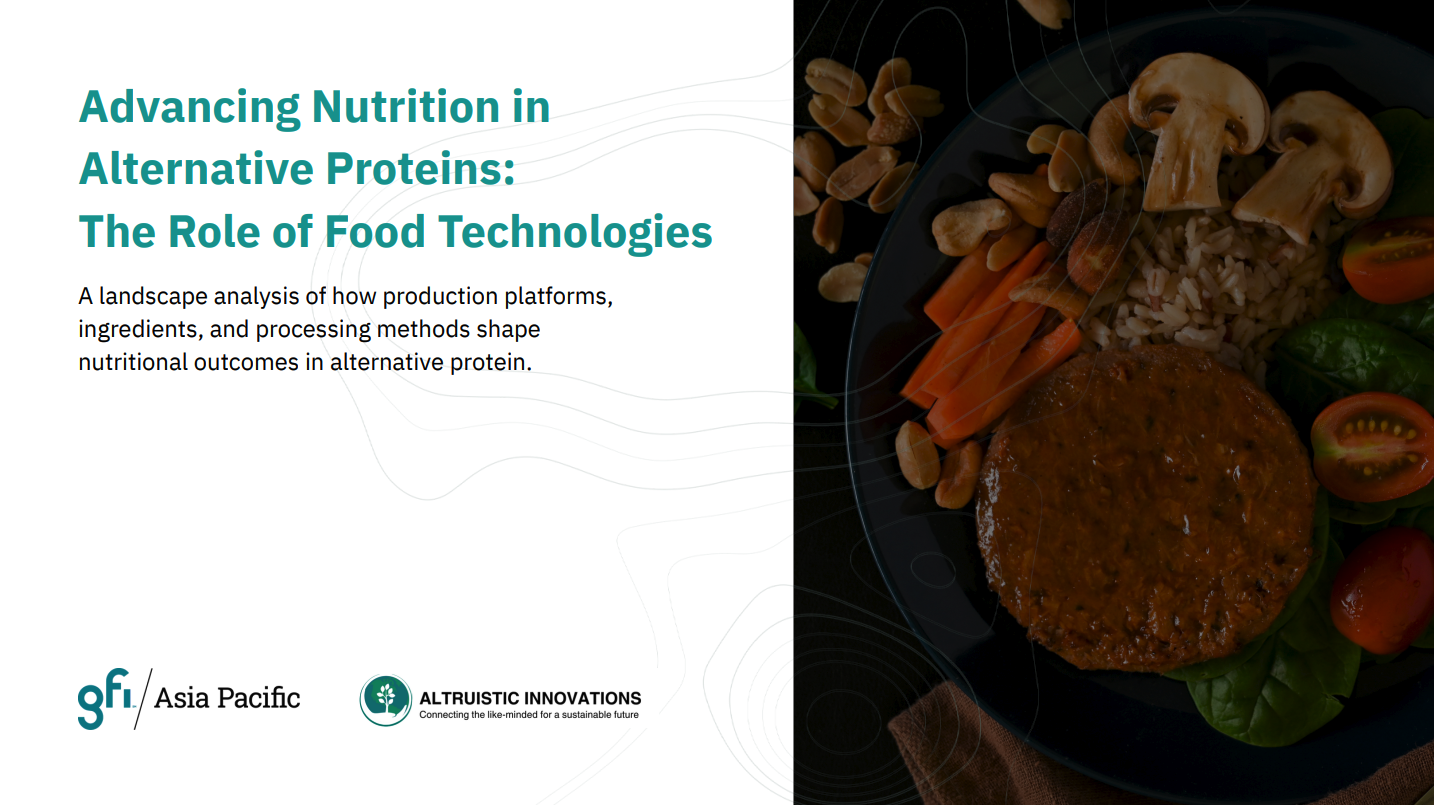
Advancing Nutrition in Alternative Proteins: The Role of Food Technologies
This joint report by The Good Food Institute APAC and Altruistic Innovations explores the landscape of food technologies used in plant-based meat and mycoprotein-based products, with a focus on how innovative processing and formulation strategies can enhance nutritional outcomes.
Using published research, product claims, and technical disclosures, the report utilises a scoring matrix to evaluate how each strategy improves digestibility, completeness, bioavailability, or functional nutrient delivery, and where further opportunities exist.
Whether you’re refining an existing formulation or designing from scratch, this report offers practical insights for advancing product nutrition within core production platforms like extrusion and fermentation.


What’s inside the report
More than 40 food technology innovations are assessed—within platforms like fermentation, extrusion, and other structuring methods—to understand how they influence the nutritional quality of plant-based and mycoprotein products.
These innovations are scored across five critical nutrition dimensions:
- Protein quality
- Sodium management
- Micronutrient enhancement (e.g., vitamin B12, iron, zinc)
- Lipid profile optimisation
- Antinutrient reduction
Key insights

Protein leads, lipids show novelty, but micronutrient strategies lag behind
Protein optimisation is widespread, with fermentation and extrusion enhancing digestibility and completeness. Lipid innovations like algae-based fats and encapsulation are emerging. Micronutrient efforts focus mostly on B12, iron, and zinc—often without tackling bioavailability or stability.

Fermentation and extrusion are core enablers
These foundational platforms consistently support nutrition optimisation, especially for protein digestibility and micronutrient enhancement. The innovation lies in how they’re applied: strain selection, cultivation conditions, input formulation, and process parameters all unlock new nutritional outcomes within these well-established processes.

Hybrid strategies yield stronger nutrition outcomes
Combining processing methods—like fermentation plus extrusion, or germination plus fortification—often results in more complete amino acid profiles, improved digestibility, and higher micronutrient absorption than a single intervention.
The Traffic Light Framework: Nutrition Innovation Across Production Technologies
The framework below scores technologies based on their contributions to five key nutrition priorities—protein quality, sodium, micronutrients, lipid profile, and antinutrients—while also evaluating commercial readiness.
Have any questions or noticed any missing or incorrect information about your organisation?
Get in touch with us: apac-scitech@gfi.org
